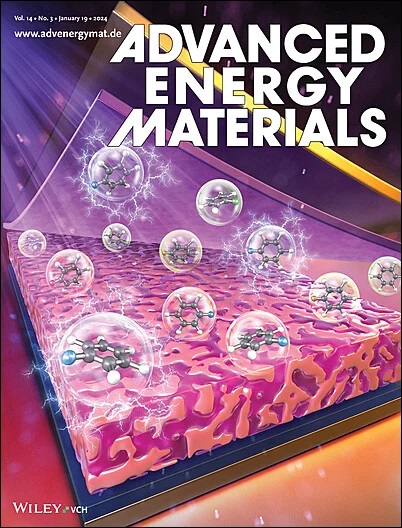Microstructure of Lithium Metal Electrodeposited at the Steel|Li6PS5Cl Interface in “Anode-Free” Solid-State Batteries
IF 24.4
1区 材料科学
Q1 CHEMISTRY, PHYSICAL
引用次数: 0
Abstract
Recent research shows that integrating lithium metal anodes can enhance battery energy density, but the high reactivity of lithium requires handling under inert conditions to avoid degradation. To overcome this, reservoir-free cells (RFCs) are explored, where lithium metal is electrodeposited at the current collector (CC) and solid electrolyte (SE) interface during initial charging. The electrochemical properties of electrodeposited lithium are influenced by its morphology and microstructure, which impact lithium discharge capacity and pore formation. However, little is known about how to control the microstructure of electrodeposited lithium. This work experimentally characterizes the lithium microstructure at the steel|Li6PS5Cl interface using cryogenic ion beam milling, scanning electron microscopy (SEM), and electron backscatter diffraction (EBSD), focusing on the effects of electrodeposition current density and lithium layer thickness. The results show that layer thickness, not current density, primarily governs the lithium microstructure. This “specimen thickness effect” is qualitatively described using a Monte Carlo Potts model and indicates that electrodeposited lithium metal quickly equilibrates at room temperature.

“无阳极”固态电池中钢| - Li6PS5Cl界面电沉积金属锂的微观结构
最近的研究表明,集成锂金属阳极可以提高电池的能量密度,但锂的高反应性需要在惰性条件下处理,以避免降解。为了克服这个问题,研究人员探索了无储层电池(rfc),其中锂金属在初始充电时电沉积在集流器(CC)和固体电解质(SE)界面。电沉积锂的电化学性能受其形貌和微观结构的影响,从而影响锂的放电容量和孔隙形成。然而,如何控制电沉积锂的微观结构却鲜为人知。本文利用低温离子束铣削、扫描电子显微镜(SEM)和电子背散射衍射(EBSD)等技术,研究了电沉积电流密度和锂层厚度对| - Li6PS5Cl界面锂离子的微观结构。结果表明,控制锂微观结构的主要因素是层厚,而不是电流密度。使用蒙特卡罗波茨模型定性地描述了这种“试样厚度效应”,并表明电沉积的锂金属在室温下迅速平衡。
本文章由计算机程序翻译,如有差异,请以英文原文为准。
求助全文
约1分钟内获得全文
求助全文
来源期刊

Advanced Energy Materials
CHEMISTRY, PHYSICAL-ENERGY & FUELS
CiteScore
41.90
自引率
4.00%
发文量
889
审稿时长
1.4 months
期刊介绍:
Established in 2011, Advanced Energy Materials is an international, interdisciplinary, English-language journal that focuses on materials used in energy harvesting, conversion, and storage. It is regarded as a top-quality journal alongside Advanced Materials, Advanced Functional Materials, and Small.
With a 2022 Impact Factor of 27.8, Advanced Energy Materials is considered a prime source for the best energy-related research. The journal covers a wide range of topics in energy-related research, including organic and inorganic photovoltaics, batteries and supercapacitors, fuel cells, hydrogen generation and storage, thermoelectrics, water splitting and photocatalysis, solar fuels and thermosolar power, magnetocalorics, and piezoelectronics.
The readership of Advanced Energy Materials includes materials scientists, chemists, physicists, and engineers in both academia and industry. The journal is indexed in various databases and collections, such as Advanced Technologies & Aerospace Database, FIZ Karlsruhe, INSPEC (IET), Science Citation Index Expanded, Technology Collection, and Web of Science, among others.
 求助内容:
求助内容: 应助结果提醒方式:
应助结果提醒方式:


